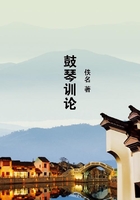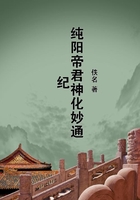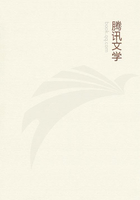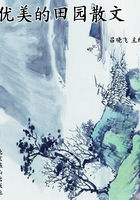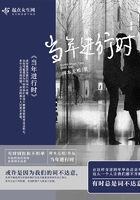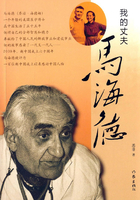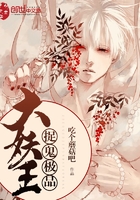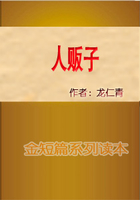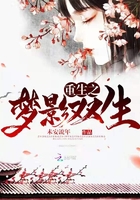Thus, during the first six thousand years of the world, from the most immemorial pagoda of Hindustan, to the cathedral of Cologne, architecture was the great handwriting of the human race. And this is so true, that not only every religious symbol, but every human thought, has its page and its monument in that immense book.
All civilization begins in theocracy and ends in democracy.
This law of liberty following unity is written in architecture.
For, let us insist upon this point, masonry must not be thought to be powerful only in erecting the temple and in expressing the myth and sacerdotal symbolism; in inscribing in hieroglyphs upon its pages of stone the mysterious tables of the law. If it were thus,--as there comes in all human society a moment when the sacred symbol is worn out and becomes obliterated under freedom of thought, when man escapes from the priest, when the excrescence of philosophies and systems devour the face of religion,--architecture could not reproduce this new state of human thought; its leaves, so crowded on the face, would be empty on the back; its work would be mutilated;its book would he incomplete. But no.
Let us take as an example the Middle Ages, where we see more clearly because it is nearer to us. During its first period, while theocracy is organizing Europe, while the Vatican is rallying and reclassing about itself the elements of a Rome made from the Rome which lies in ruins around the Capitol, while Christianity is seeking all the stages of society amid the rubbish of anterior civilization, and rebuilding with its ruins a new hierarchic universe, the keystone to whose vault is the priest--one first hears a dull echo from that chaos, and then, little by little, one sees, arising from beneath the breath of Christianity, from beneath the hand of the barbarians, from the fragments of the dead Greek and Roman architectures, that mysterious Romanesque architecture, sister of the theocratic masonry of Egypt and of India, inalterable emblem of pure catholicism, unchangeable hieroglyph of the papal unity. All the thought of that day is written, in fact, in this sombre, Romanesque style. One feels everywhere in it authority, unity, the impenetrable, the absolute, Gregory VII.; always the priest, never the man; everywhere caste, never the people.
But the Crusades arrive. They are a great popular movement, and every great popular movement, whatever may be its cause and object, always sets free the spirit of liberty from its final precipitate. New things spring into life every day. Here opens the stormy period of the Jacqueries, Pragueries, and Leagues. Authority wavers, unity is divided.
Feudalism demands to share with theocracy, while awaiting the inevitable arrival of the people, who will assume the part of the lion: ~Quia nominor leo~. Seignory pierces through sacerdotalism; the commonality, through seignory. The face of Europe is changed. Well! the face of architecture is changed also. Like civilization, it has turned a page, and the new spirit of the time finds her ready to write at its dictation.
It returns from the crusades with the pointed arch, like the nations with liberty.
Then, while Rome is undergoing gradual dismemberment, Romanesque architecture dies. The hieroglyph deserts the cathedral, and betakes itself to blazoning the donjon keep, in order to lend prestige to feudalism. The cathedral itself, that edifice formerly so dogmatic, invaded henceforth by the bourgeoisie, by the community, by liberty, escapes the priest and falls into the power of the artist. The artist builds it after his own fashion. Farewell to mystery, myth, law. Fancy and caprice, welcome. Provided the priest has his basilica and his altar, he has nothing to say. The four walls belong to the artist. The architectural book belongs no longer to the priest, to religion, to Rome; it is the property of poetry, of imagination, of the people. Hence the rapid and innumerable transformations of that architecture which owns but three centuries, so striking after the stagnant immobility of the Romanesque architecture, which owns six or seven.
Nevertheless, art marches on with giant strides. Popular genius amid originality accomplish the task which the bishops formerly fulfilled. Each race writes its line upon the book, as it passes; it erases the ancient Romanesque hieroglyphs on the frontispieces of cathedrals, and at the most one only sees dogma cropping out here and there, beneath the new symbol which it has deposited. The popular drapery hardly permits the religious skeleton to be suspected. One cannot even form an idea of the liberties which the architects then take, even toward the Church. There are capitals knitted of nuns and monks, shamelessly coupled, as on the hall of chimney pieces in the Palais de Justice, in Paris. There is Noah's adventure carved to the last detail, as under the great portal of Bourges.
There is a bacchanalian monk, with ass's ears and glass in hand, laughing in the face of a whole community, as on the lavatory of the Abbey of Bocherville. There exists at that epoch, for thought written in stone, a privilege exactly comparable to our present liberty of the press. It is the liberty of architecture.
This liberty goes very far. Sometimes a portal, a fa?ade, an entire church, presents a symbolical sense absolutely foreign to worship, or even hostile to the Church. In the thirteenth century, Guillaume de Paris, and Nicholas Flamel, in the fifteenth, wrote such seditious pages. Saint-Jacques de la Boucherie was a whole church of the opposition.
Thought was then free only in this manner; hence it never wrote itself out completely except on the books called edifices.

